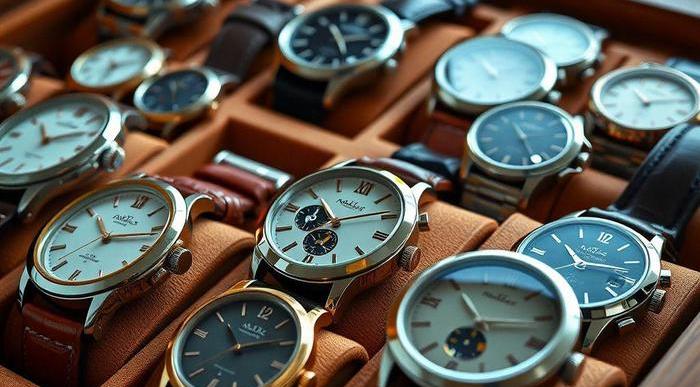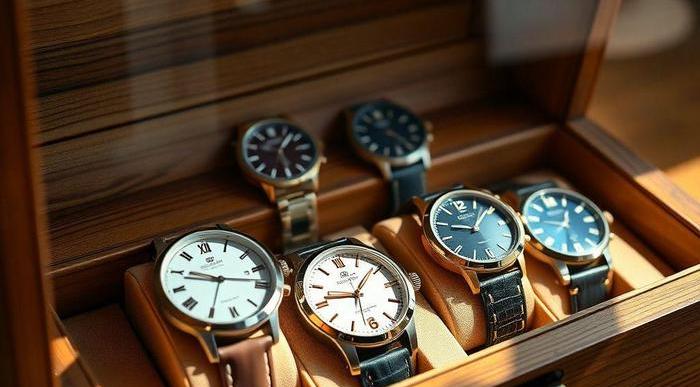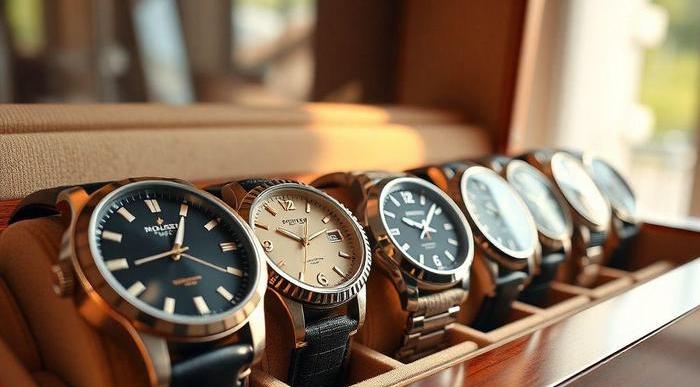The Art Of Watch Collecting: How To Start Your Collection
Note: This page contains affiliate links.
As an Amazon Associate, I earn from qualifying purchases when you click on the link, but you are not charged extra.
Watch collecting has captivated enthusiasts worldwide for centuries, blending precision craftsmanship, rich history, and artistic expression into one intricate package. Starting a watch collection is an adventure that involves not only curating timepieces but also developing a deeper understanding of horology, aesthetics, and the marketplace. Every piece in a collection can reflect a unique story, whether it’s the innovation behind its movement, the brand’s historical significance, or the distinct style that defines its era. To start, potential collectors should ask themselves about their motivations—whether they’re drawn to historical watches, specific brands, or investment potential, setting an intention helps shape the journey. This initial self-reflection will steer collectors toward watches that they’ll connect with, ensuring a meaningful and rewarding experience.
Essential Tips For New Watch Collectors
Diving into watch collecting requires some essential insights to navigate the nuances and pitfalls of the hobby. Firstly, research is critical—understand watch brands, their histories, movement types, materials, and market values. Always start with a modest budget, as this ensures new collectors can experiment without significant financial risk. Begin with versatile, iconic watches from reputable brands such as Seiko, Omega, or Tudor, which offer excellent quality at accessible price points. Secondly, authenticity is paramount; only purchase from reputable sellers or certified dealers to avoid counterfeits and inflated pricing. Patience is also vital—true collectors know that acquiring a collection takes time and a keen eye for finding the right watch rather than an impulsive one.
Understanding Watch Rarity And Value
Rarity and value are central pillars in watch collecting, distinguishing it from merely buying timepieces. Rarity doesn’t only refer to limited-edition pieces; it includes discontinued models, certain configurations (like a specific dial color or material), or rare complications. For instance, a Rolex Submariner with a particular dial variant can be considerably rarer and more valuable than another model produced in greater numbers. Understanding movements, materials, and brand prestige can also give insight into a watch’s value. Some brands like Patek Philippe, Vacheron Constantin, and Audemars Piguet are synonymous with rarity and value due to their heritage and painstaking production processes. Learning these nuances helps collectors spot potential investments while also cultivating a collection with rich depth.
Building A Diverse Watch Collection

A diverse collection balances variety across brand, style, and function, enabling collectors to experience different facets of horology. To build diversity, collectors can focus on various watch types—dress watches for formal occasions, rugged dive watches for durability, or aviation watches for their unique chronograph features. Adding vintage watches introduces a historical element, often displaying unique patinas or features not seen in modern watches. Diversifying by brands also gives insight into different philosophies and craftsmanship, from the robust Swiss manufacturers to intricate Japanese timepieces. This broad approach creates a multifaceted collection that reflects both the collector’s tastes and the industry’s diversity, ensuring the collection remains engaging and educational.
The Importance Of Research In Collecting
Research is the cornerstone of successful watch collecting, offering collectors insight into market trends, historical significance, and authenticity. In-depth research involves learning about each watch’s movement, brand history, and specific variations that can increase a piece’s value. Reading through horological literature, joining forums, and consulting with experts can provide layers of understanding that go beyond superficial appeal. Through diligent research, collectors can identify watches that offer long-term value and develop the skills to spot authentic pieces over counterfeits. Additionally, understanding market trends through historical price tracking and analysis can help collectors make informed decisions, ensuring their investments align with their collection goals.
How To Attend Watch Shows And Auctions

Watch shows and auctions are invaluable experiences for collectors, offering firsthand exposure to rare and notable pieces. Shows like Baselworld or Watches & Wonders are iconic, showcasing industry innovations, brand exclusives, and networking opportunities with horology experts and fellow enthusiasts. For those looking to buy, auctions present opportunities to acquire high-value watches, but understanding the bidding process is essential. Before attending, collectors should study the auction catalog, set a budget, and clarify the auction house’s policies on fees and bidding increments. Auctions can become intense, and knowing one’s limit ensures the collector avoids overbidding. These events also allow collectors to connect with industry insiders, gaining access to exclusive knowledge and potentially rare pieces.
Spotting Trends In Watch Collecting
Trends in watch collecting vary from fashion-driven preferences to shifts in vintage versus modern watch demand. Recent years have seen the resurgence of smaller-diameter watches, often preferred for their vintage charm and refined aesthetic. In terms of brands, independent watchmakers like F.P. Journe or A. Lange & Söhne are growing in popularity due to their unique designs and limited productions. Sustainable and ethical watchmaking is another trend, with brands exploring eco-friendly materials and practices. Collectors can stay ahead by studying these trends while understanding that trends can be transient—true value lies in timeless quality and historical significance. Remaining informed about trends ensures collectors stay engaged with the industry’s evolution without compromising their collection’s integrity.
Networking With Other Collectors

Networking with fellow collectors is an enriching aspect of watch collecting, offering both social and educational benefits. Online forums, social media groups, and local horology clubs provide platforms to share knowledge, experiences, and tips on sourcing rare pieces. Engaging with the community allows for trade opportunities and access to exclusive events, while also fostering friendships built on shared passion. Some collectors form connections with specific dealers, gaining early insights on new releases or special deals. Networking also provides a safety net, as collectors can consult trusted peers to verify the authenticity of potential acquisitions. Overall, networking enhances the collecting journey, providing a support system and deepening the sense of community.
Caring For Your Watch Collection
Proper maintenance is essential to preserve a watch’s functionality and aesthetic value over time. Watches should be stored in controlled environments, away from extreme temperatures and humidity, as these factors can damage both the movement and exterior. Investing in a watch winder can help keep automatic watches in working order, while regular servicing every few years ensures optimal functionality and longevity. Collectors should clean their watches with a soft, lint-free cloth, avoiding any harsh chemicals that could harm the watch’s surface or materials. Furthermore, vintage watches require extra care due to the delicacy of older components, making professional servicing even more important. Proper care not only preserves the collection but also maintains its market value.
Common Mistakes To Avoid As A Collector
Common mistakes in watch collecting include impulsive purchases, lack of research, and ignoring authenticity. New collectors might buy watches based on trends or immediate appeal rather than long-term value or personal significance, which can lead to a disjointed and less satisfying collection. Authenticity is also a common pitfall; counterfeit watches abound, and new collectors can easily be deceived if they don’t purchase from reputable sources. Additionally, ignoring maintenance can devalue a collection over time, as neglected watches may suffer irreversible damage. Overlooking the importance of networking can also be detrimental, as seasoned collectors and dealers often provide invaluable advice. Avoiding these mistakes requires discipline, patience, and a proactive approach.
Conclusion
Collecting watches is an art form that combines passion, knowledge, and an appreciation for craftsmanship. A successful collection doesn’t happen overnight but through careful choices, ongoing research, and an openness to learning from both the watches and the community of collectors. While trends may come and go, a well-curated collection holds lasting significance, blending personal taste with horological history. By navigating the world of watches thoughtfully—attending shows, researching, networking, and caring for each piece—collectors can develop a collection that not only reflects their personality but also stands the test of time, becoming a legacy that might be passed down for generations.
